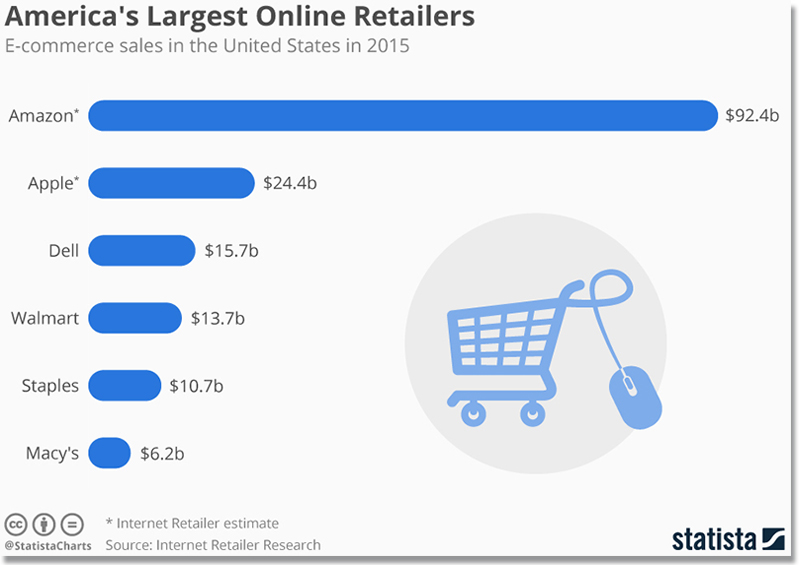Deal Positions Walmart for Expanded
e-Commerce Growth and Customer Reach
The acquisition will build on and complement the significant foundation already in place to serve customers across the Walmart app, site and stores and position the company for even faster e-commerce growth in the future by expanding customer reach and adding new capabilities.
The acquisition, which is subject to regulatory approval, has been approved by the Boards of Directors for both companies and is expected to close this calendar year.
“We’re looking for ways to lower prices, broaden our assortment and offer the simplest, easiest shopping experience because that’s what our customers want,” said Doug McMillon, president and CEO, Wal-Mart Stores, Inc.
“We believe the acquisition of Jet accelerates our progress across these priorities. Walmart.com will grow faster, the seamless shopping experience we’re pursuing will happen quicker, and we’ll enable the Jet brand to be even more successful in a shorter period of time. Our customers will win. It’s another jolt of entrepreneurial spirit being injected into Walmart.”
Jet is among the fastest growing and most innovative e-commerce companies in the U.S., with an experienced leadership team led by co-founder and CEO Marc Lore, together with fellow co-founders Mike Hanrahan and Nate Faust.
Among other things, Lore previously co-founded and led Quidsi, the parent company of e-commerce sites Diapers.com, Soap.com and Wag.com. With the help of Faust and Hanrahan, Lore grew Quidsi into a prominent and successful business that was ultimately sold.
The acquisition of Jet will infuse Walmart with fresh ideas and expertise, as well as an attractive brand with proven appeal, especially with Millennials, the first generation of true digital natives.
Among other things, Jet has:
- Demonstrated ability to scale with speed, reaching $1 billion in run-rate Gross Merchandise Value (GMV) and offering 12 million SKUs in its first year.
- A growing customer base of urban and millennial customers with more than 400,000 new shoppers added monthly and an average of 25,000 daily processed orders.
- Best-in-class technology that rewards customers in real time with savings on items that are bought and shipped together, thereby reducing the supply-chain and logistics costs often buried in the price of goods.
- A select group of more than 2,400 retailer and brand partners tailored to create an attractive and distinctive assortment for consumers.
“We started Jet with the vision of creating a new shopping experience,” Lore said. “Today, I couldn’t be more excited that we will be joining with Walmart to help fuel the realization of that vision. The combination of Walmart’s retail expertise, purchasing scale, sourcing capabilities, distribution footprint, and digital assets – together with the team, technology and business we have built here at Jet – will allow us to deliver more value to customers.”
Walmart and Jet will maintain distinct brands, with Walmart.com focusing on delivering the company’s Everyday Low Price strategy, while Jet.com will continue to provide a unique and differentiated customer experience with curated assortment. Walmart and Jet will leverage innovative technology solutions from both companies to develop new offerings to help customers save time and money.
Walmart believes it will obtain the necessary regulatory approvals to complete the transaction and both companies intend to make all necessary filings in the near future.
Jet.com: Flying High or Yet to Take Off?
Walmart did not reveal anything about Jet.com’s total number of customers, monthly or annual revenues or profitability, but before acquisition Jet.com had projected it would remain in the red until 2020.
In that regard, while the company has clearly grown fast (and with a strong cash injection), it was still young and had a lot left to prove.
Indeed, Jet.com’s ambitions and positioning have in some ways far outstripped what the company has actually achieved in its relatively short life as a startup, with early investor interest, it seems, largely based on the strength and vision of the founding team. That team included and was led by Marc Lore, founder of Quidsi - the umbrella company for Daipers.com, Soap.com and BeautyBar.com - who then sold the company to Amazon for $545 million in 2010.
Founded in 2013 by Lore, Mike Hanrahan and Nate Faust, the company had raised hundreds of millions of dollars (upwards of $500 million, but possibly more like $800 million unreported) at a steadily rising valuation before finally launching in July 2015.
The $3 billion that Jet.com has now sold for, in fact, was one valuation that the company was reportedly floating for a funding round it was trying to raise for the end of last year.
And more worrying for competitors, its funding rounds included investments from another company that likely keeps Amazon and Walmart up at night: Alibaba.
As a startup, Jet.com has had some distinct ups and downs.
When it first opened its virtual doors for business, Jet.com was modelled on the model made popular by services like Amazon Prime and Costco, where users had to be members ($50/year in Jet.com’s case) in order to shop for discounted goods on the site.
That fee was dropped only three months after the site went live in order to bring in more users. Instead of offering discounts to members, Jet.com spread the discounts across the range of all its products.
And there were other issues beyond scaling. For example, to increase the number of products on its platform, early on Jet.com ran into trouble with several brands after linking to their own sites without permission.
Jet.com was also still very young as an enterprise, with operations only live in the U.S. However, there was at least one other domain name registered by Lore, in the UK, which pointed potentially to at least one launch in Europe in the near future.
Jet.com had projected that it would only reach profitability in 2020. It will be interesting to see how and if that gets accelerated under Walmart and with the massively bigger economy of scale that this brings Jet.com. Indeed, that is something that Walmart is already highlighting.
“With this complementary platform and new customers, we see potential synergies in product cost, shipping, fulfillment and integration of technology platforms,” the Walmart spokesperson said. “Jet can help Walmart and Walmart can help Jet.”
Source: TechCrunch
Related: Good Things Come in Smaller Packages

Article topics
Email Sign Up



















